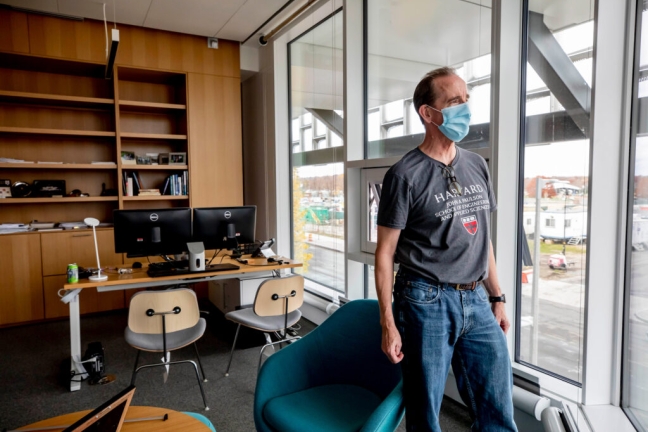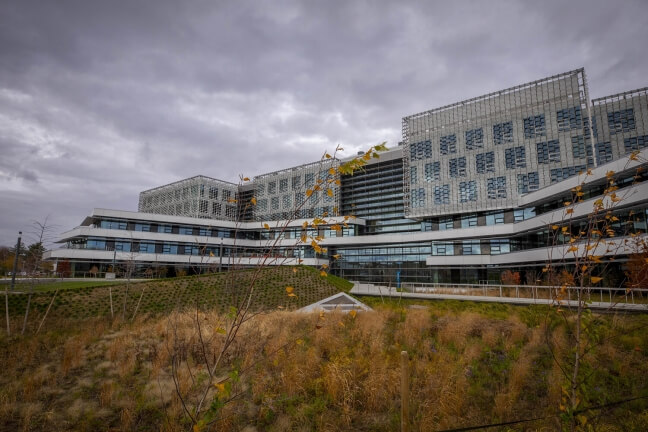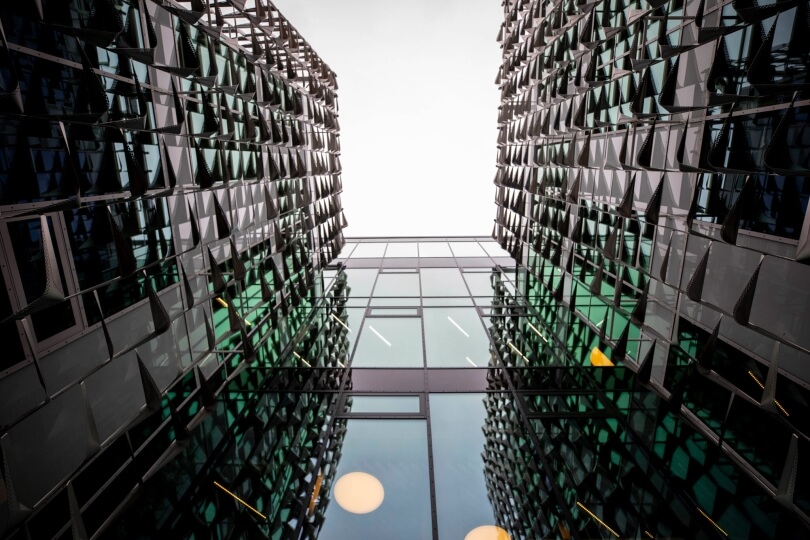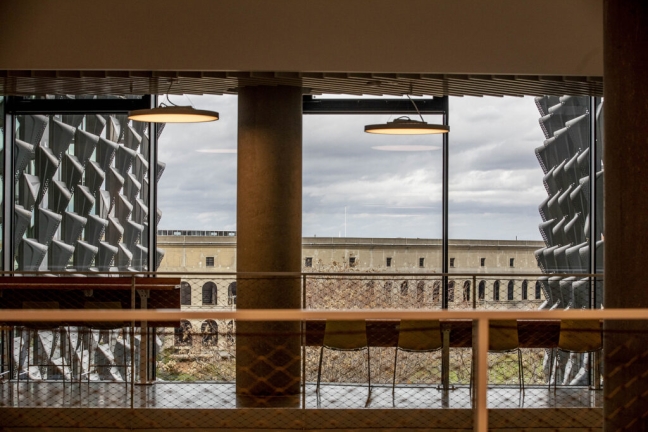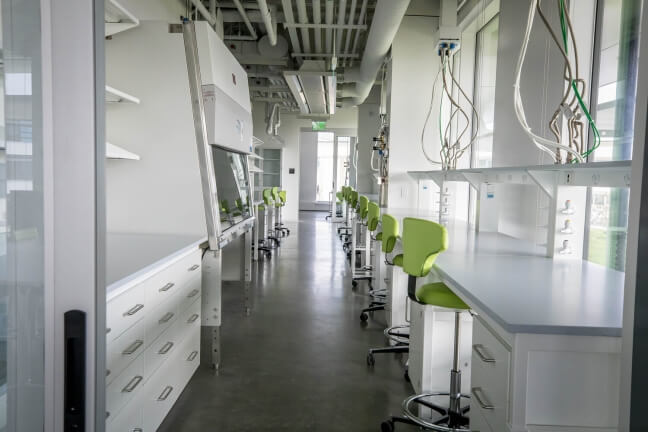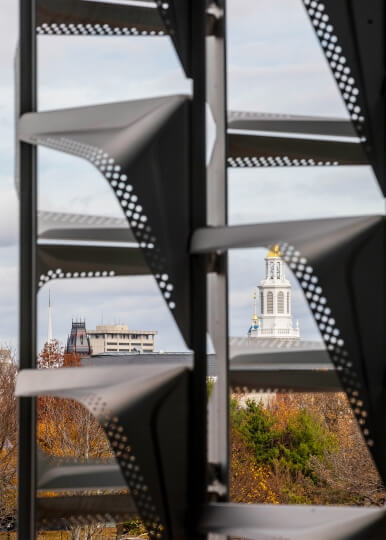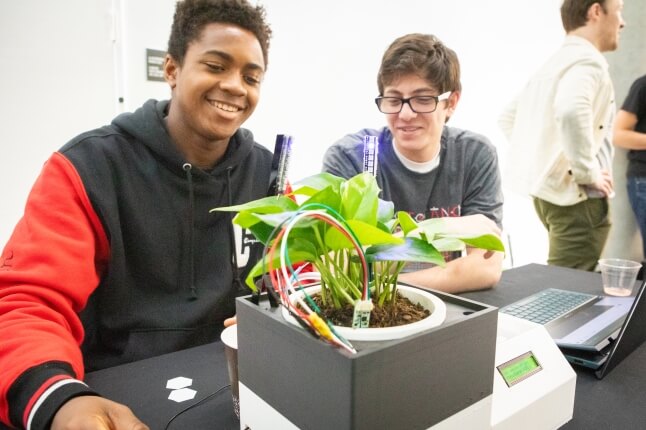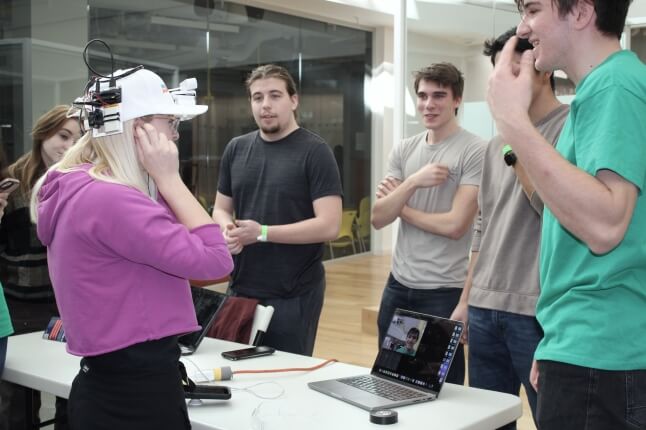The John A. Paulson School of Engineering and Applied Sciences (SEAS) is looking cautiously ahead to the post-COVID era and taking initial steps toward the long-anticipated opening of its new Science and Engineering Complex in Allston.
In November, the School started the lengthy and complex process of moving labs from the Cambridge campus to their new home across the Charles River, an effort delayed by a halt in construction last spring after the coronavirus’ abrupt arrival. School leaders said that some labs are now in and operating, albeit at reduced capacity owing to COVID-era occupancy restrictions, and that others will be joining them in the coming weeks.
“Several labs, notably our robotics groups, have already moved from Cambridge and are operational in the SEC under Harvard’s strict COVID protocols,” said SEAS Dean Francis Doyle. “The remaining moves right now include computer science and electrical engineering, to be followed by bioengineering over the winter. A few labs will move into the building during the spring timeframe.”
